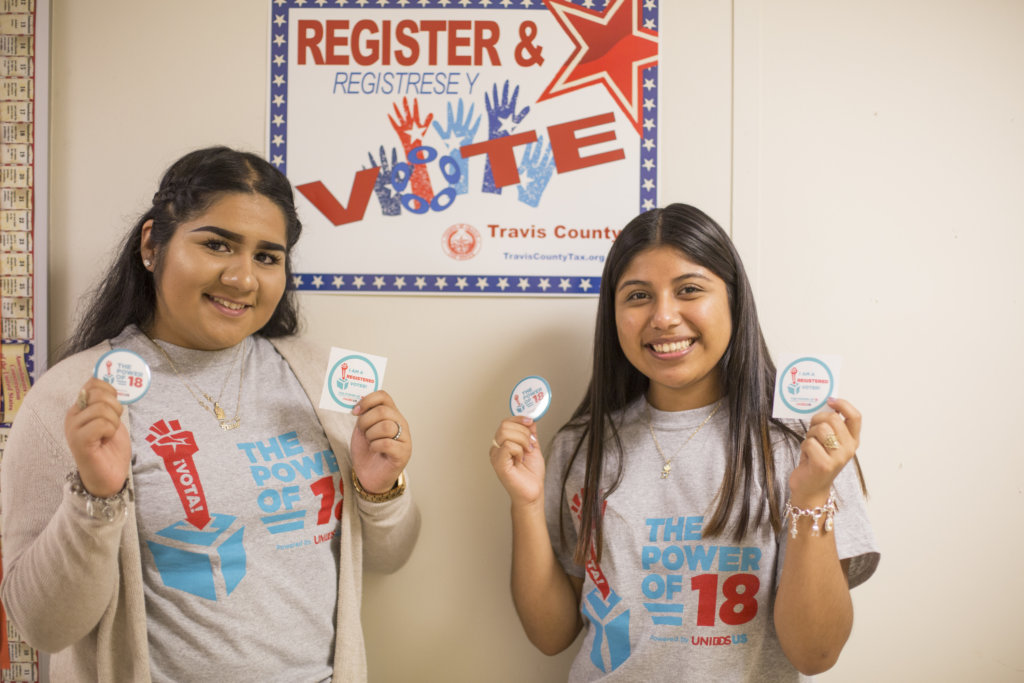VIDEO: UnidosUS Education Policy Project Director Amalia Chamorro Virtually Testifies in Front of Congress on Investing in Latino Students’ Success
Latino students have been disproportionally impacted by the pandemic due to the constraints of remote learning and already existing barriers such as lacking funds and supports for English learners (ELs) and access to college. Still, UnidosUS’s education team is hopeful things can turn around, and this spring, UnidosUS Education Policy Project Director Amalia Chamorro shared with Congress some of the ways that can happen through the FY22 federal budget.
“These inequalities undermine the ideal of education as the great equalizer of our society,” remarked Chamorro during Public Witness Day on May 20th before the Labor, Health and Human Services, Education, and Related Agencies Subcommittee, House Committee on Appropriations.
Invest in Title III Funding for ELs
One of the most underserved groups of students are the nation’s 5 million ELs, who make up 10% of the K-12 public school population, the vast majority of whom are Latino. Over the past 20 years, Title III funding, the federal money allotted for their support, has fluctuated between $664 million to its current level of $797 million, she noted.
“When adjusting for inflation, Title III funding has actually decreased by 23% since 2010,” Chamorro said, adding that UnidosUS and the National Association for Bilingual Education circulated a letter to Congress co-signed by 120 partner organizations requesting $2 billion for the Title III program.
“Increasing funding support for ELs would make for a smart investment,” she said, citing a congressionally requested report from the American Academy of Arts and Sciences Commission on Language Learning that stated: “As a country, the United States needs bilingual and biliterate “citizens for national security and to promote economic growth.”
Access to Higher Education
Chamorro noted that the number of Latinos aged 18-24 who enrolled in college had increased by 10% over the last decade, but just 55% of Latinos manage to complete their degrees within six years, compared to 64% of white students. Even more concerning, Latino enrollment in postsecondary education declined by 6% in fall 2020 amid the pandemic.
“Higher education is one of the surest pathways to economic and social mobility, but it remains out of reach for too many students who are Latino, the first in their families to attend college, and come from low-income backgrounds,” Chamorro explained.
Since half of Latino students receive Pell grants, she said Congress can best improve these outcomes by doubling the maximum Pell grant to $12,990 per student. She also requested $1.32 billion for TRIO, a series of student support programs aimed at helping low-income, first-generation, and other underserved students navigate the logistical, financial, and cultural waters of attaining their degrees; and $400 million for GEAR UP, which provides college-readiness program grants to states and partnerships for high-poverty middle and high schools; and $50 million for the high school equivalency program (HEP), and the college assistance migrant program (CAMP).
“Doubling the Pell Grant would also restore the purchasing power to half the cost of college for a bachelor’s degree at an in-state, public institution, increase degree attainment by investing in academic and comprehensive support programs,” she said, adding, “our research shows that these programs help keep students enrolled by providing academic, social, and emotional guidance, and mentoring,” Chamorro said.
And with Hispanic-Serving Institutions (HSIs) making up 18% of all colleges and universities, and enrolling 67% of all Latino undergraduate students, she requested $350 million to support HSIs.
A Diverse Educator Workforce
Taking these steps, as well as investing $100 million in teacher quality partnership grants, would contribute to a more diverse workforce, especially in the area of education, which is disproportionately made up of white faculty and staff, Chamorro added.
“Research suggests that students’ performance can be positively impacted by a more diverse workforce,” she said, noting that more than half of public K-12 students are students of color, but nearly 80% of their teacher workforce is white. In fact, she noted the largest demographic mismatch exists between Latino students, who represent one quarter of the K-12 school population, and Latino teachers who make up only 9% of the educator workforce.
“I appreciated the opportunity to address Congress regarding our education funding priorities, Chamorro later told ProgressReport.co. “As Congress moves through this year’s appropriations process, it is critical that funding decisions are centered on supporting students with unique educational need who have been impacted the most by the pandemic, to ensure real recovery can happen for all.”



